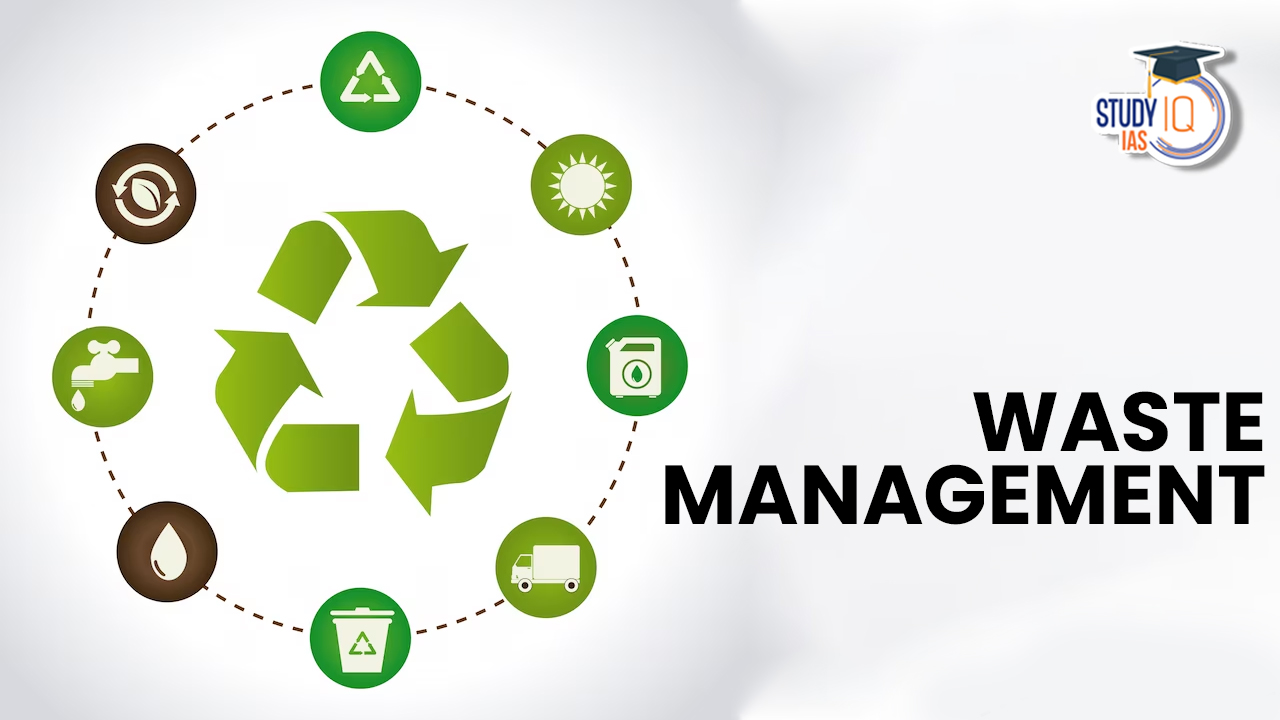Table of Contents
Waste Management
Waste management encompasses a multidisciplinary approach that integrates engineering principles, economics, urban and regional planning, management techniques, and social sciences. Its objective is to minimize the overall wastage within the system under consideration. A systematic waste management approach should address all types of resources at every stage. Notably, material constitutes a significant portion of the total production cost, making the management of wasted materials critically important (Arora, 2004).
According to the Environmental Protection Act of 1990, waste is defined as any undesirable material. This includes scrap material, effluents, or any surplus substance or item requiring disposal due to being damaged, worn out, contaminated, or otherwise polluted. Wastes are essentially those substances or objects that no longer serve a purpose within the business cycle or chain of utility. For instance, glass bottles that are returned or reused in their original form are not considered waste, whereas glass bottles collected by the public and sent for remoulding are classified as waste until they have been recovered. The Department of the Environment identifies four broad categories of potential waste:
- Items that are worn but still functional and can be used for their intended purpose (potentially after repair).
- Substances or items that can be immediately utilized for purposes other than by specialized waste recovery entities. For example, ash from a power station used in building materials.
- Degraded substances or items that can only be utilized by specialized waste recovery establishments. These remain classified as waste, even if sent for recovery for value, such as contaminated solvents or scrap. They are only considered recovered when the process is complete.
- Substances that the possessor no longer wants and for which they must pay for proper disposal.
Types of Waste
The rapid pace of economic development has led to an improved standard of living worldwide. This, in turn, has resulted in increased material consumption and subsequently, higher waste generation. Solid waste materials generated, particularly in urban areas, include:
- Organic waste
- Plastic waste
- Metal waste materials
- Glass waste materials
- Paper waste materials
- Electronic waste
- Other materials like ash, sand, grit, etc.
Waste Management Process
Ensuring Environmental Health and Resource Recovery. Waste management encompasses the collection, transportation, processing, recycling, or disposal of materials generated through human activity. This process is primarily aimed at mitigating their impact on both human health and the environment. Additionally, waste management strives to extract valuable resources from these materials. It covers a wide range of substances, including solid, liquid, gaseous, and radioactive, each requiring specialized methods and expertise for proper handling.
Studies have shown that waste management practices vary depending on factors like a nation’s level of development, urban or rural settings, and whether the waste is generated by residential or industrial sources. Typically, local government authorities oversee the management of non-hazardous waste from homes and institutions in metropolitan areas, while generators of non-hazardous commercial and industrial waste usually handle its management.
An efficient waste management system plays a crucial role in ensuring the smooth operation of various interconnected systems. These systems are vital for tasks such as waste containment and leachate management. Without regular examination, maintenance, improvement, and assessment of the components of a waste management system, even the most well-designed unit may not function optimally.
Effective implementation of a waste management system can lead to reduced costs in both the short and long term, provide protection for workers and local communities, and foster positive community relations. Furthermore, a successful waste management system necessitates the establishment of procedures for monitoring performance and tracking progress towards clearly defined environmental objectives.
Objective of Waste Management
The primary aim of waste management is to reduce waste generation, ultimately striving for an ideal system. Conversely, resource management seeks to maximize the efficient use of available resources. Both waste and resource management share a common objective: the optimal utilization of resources to enhance system efficiency and growth. However, their approaches differ (Arora, 2004).
To accomplish this objective, it is crucial to:
- Prevent the generation of waste.
- Encourage the reuse of waste.
- Support the biological recovery and material recycling of waste.
- Promote the energy utilization of waste that isn’t suitable for recycling.
- Ensure that the treatment and disposal of waste do not result in any harmful impacts.
Management literature has established that resource and waste management are interdependent and complement each other in achieving these goals.
Different Methods of waste disposal
The different methods of waste disposal have been mentioned below:
Landfill
- In the age-old ritual of waste management, the Landfill emerges as a solemn guardian. It cradles our refuse in vacant urban spaces, a sacred resting place for our discarded tales. Covered in a quilt of soil, it guards against the specter of contamination. And trees, nature’s sentinels, are called upon, their roots tenderly embracing the soil, fortifying this sanctuary.
- The Landfill, if choreographed with care, waltzes as an economical and hygienic custodian of our waste. Yet, in the chaos of urban life, unplanned landfills sprout like wildflowers in forgotten corners, birthing environmental and health specters. Poisonous gases escape, toxic secrets seep, and the once vibrant vegetation bows in sorrow. The Landfill, a testament to our stewardship, a tale of caution, a dance of contradictions.
Incineration
- It is a carefully controlled process of burning or thermally treating mostly organic substances at high temperatures to release water, CO2, and thermal energy.
- Advantages: Produces power and is useful for handling big amounts of dangerous organic waste.
- Disadvantages: The installation is expensive (high equipment and labor costs) and produces harmful gases (HCL, CO, and SO2).
Pyrolysis
This process changes the condition of the solid into a liquid, and the liquid into a gas. The creation of energy can then be done using these treatment byproducts.
Gasification
The substance to be treated is immediately transformed into SynGas (synthetic gas), which is made up of carbon dioxide and hydrogen.
Bioremediation
Utilizing living creatures, primarily microbes, to transform environmental pollutants into less hazardous forms is known as bioremediation. For instance, a pseudonymous microbe may break down artificial pesticide.
The use of bioremediation techniques reduces exposure hazards for workers because they are more affordable than conventional approaches and allow for the on-site treatment of contaminants.
Waste Management UPSC
Waste management can be accomplished in one of two ways: trash reduction or recycling. Less waste will need to be transferred to landfills and incinerators if waste reduction and recycling efforts are consistent. As a result, there will be a significant decrease in the emission of greenhouse gases and other types of pollution. There will be less new product manufacturing as a result of reuse and recycling of existing items.


 Daily Quiz 16 April 2025
Daily Quiz 16 April 2025
 Bhashanet Portal : Empowering Multilingu...
Bhashanet Portal : Empowering Multilingu...
 Soyuz Aircraft: History, Design and Sign...
Soyuz Aircraft: History, Design and Sign...





















